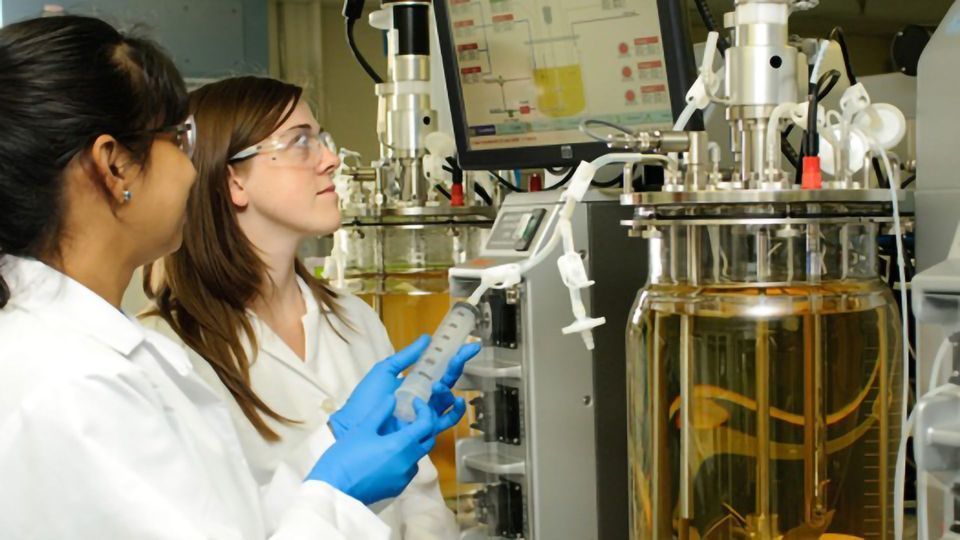Facilitating Cell Culture Growth and Protecting Protein Integrity

Complete the form below to unlock access to ALL audio articles.
Many biotherapeutic drugs such as recombinant antibodies are manufactured utilizing host cells, a common example being Chinese hamster ovary (CHO) cells. A key factor for consideration in this process is the growth and viability of these cells – ultimately this influences the quality and quantity of the biotherapeutic product.
Here, a high-quality medium is extremely important. Lonza recently announced their medium feed, eCHO™, which minimizes the generation of lactate and protects the integrity of proteins. Technology Networks spoke with Nicole Wellens, Global Product Manager for BioTherapeutics Media, Lonza to learn more about the new feed and how it has been developed.
Molly Campbell (MC): When producing biotherapeutics, why is it important to use a high-quality medium to facilitate the growth of cell cultures?
Nicole Wellens (NW): Biotherapeutics manufacturers have long moved away from using serum for culturing cells. The key reasons driving this change included the large batch-to-batch variability of serum, as well as its susceptibility to contamination from viruses and bacteria such as mycoplasma. To overcome these challenges, the biotherapeutics industry uses chemically defined media, the benefits of which include: the composition of the media is identical for every batch, the formulation components of each medium are known, and they are all of non-animal origin. Lonza’s newly launched eCHOTM Basal and eCHOTM Feed, for example, are both chemically defined, resulting in consistent protein yields. High quality media and feeds also offer improved cell viability during culturing and maintain low levels of lactate (<2g/L), which are both key contributors to protein integrity.
MC: How can lactate influence protein integrity?
NW: Lactate is a major by-product of Chinese hamster ovary (CHO) fed-batch cultures. Increased lactate levels are the result of excessive aerobic glycolysis, also known as the Warburg effect. The lower the amount of the lactate by-product, the healthier the cells will be. Elevated lactate concentrations in cell culture media lower the pH which has a negative effect on cell health and viability. Unhealthy and dying cells typically release enzymes that can degrade the protein produced.
The culture medium composition can have a major impact on the health of the cells and the level of lactate produced. Our new eCHOTM Basal Medium, combined with the eCHOTM Feed, is developed to maintain high cell viability and produces only low levels of lactate (<2g/L), resulting in good protein integrity
MC: Please can you tell us about the development of Lonza's eCHO™ Basal Medium and Feed?
NW: In the Lonza portfolio, we have several media dedicated to CHO cell culturing, including ProCHOTM 5 and PowerCHOTM 2, which many of our users have been using in fed-batch cultures. However, until recently, Lonza did not have a dedicated feed co-developed with our ProCHOTM or PowerCHOTM Media. In the development of this new medium, our goal was to offer our customers a paired basal and feed for CHO media fed-batch cultures.
Lonza drew from valuable customer insights to create the new eCHOTM Medium. Our customers had expressed their need for an easy-to-use medium and we created this new product with one part eCHOTM Basal Medium and one part eCHOTM Feed, available as both powder and liquid options (liquid produced from one powder component). We used economic ingredients to be able to offer this at an attractive price. Using our paired eCHOTM Basal Medium and eCHOTM Feed enables high CHO cell viability during production, resulting in easy downstream processing combined with low lactate levels resulting in high protein integrity.
MC: How can Lonza's eCHO™ Basal Medium and Feed accelerate protein production?
NW: Compared to other CHO media on the market, Lonza’s eCHOTM Medium enables a consistent protein yield (3g/L), resulting in enhanced cell viability at the end of the fed-batch culture. High cell viability reduces cell debris, facilitating easier and faster downstream processing with reduced protein loss.
MC: How is the eCHO™ Medium different to other media on the market?
NW: With the eCHOTM Basal Medium and eCHOTM Feed, users can benefit from a paired fed-batch medium, which is cost-effective and easy to use either in liquid or powder formats to deliver consistent protein production. Our customers can start by using the liquid formula and easily scale-up to use the powder option without process changes — the eCHOTM Basal Medium and eCHOTM Feed are produced from one powder component each.
Nicola Wellens, Global Product Manager for BioTherapeutics Media, Lonza, was speaking with Molly Campbell, Science Writer, Technology Networks.


